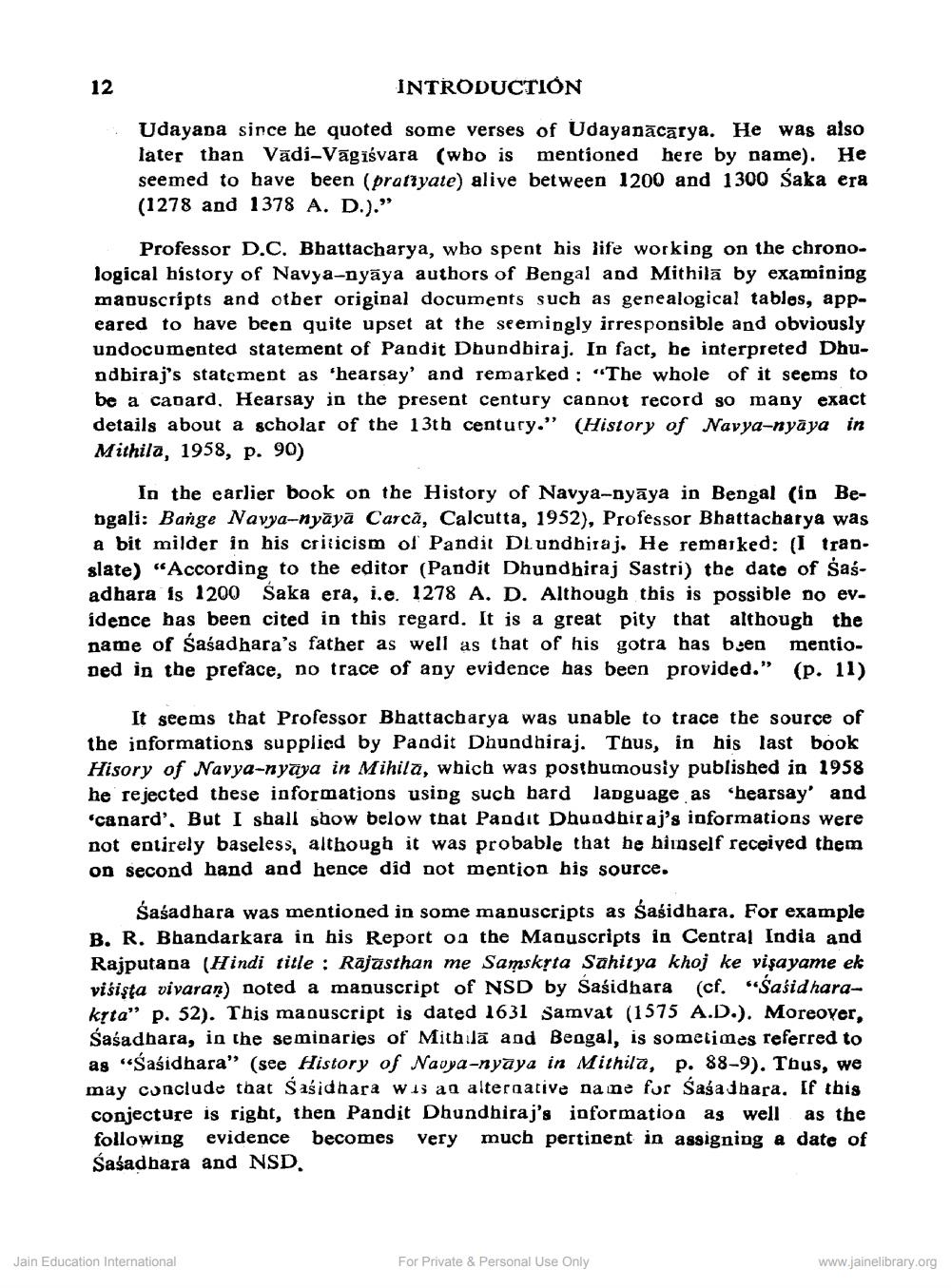________________
INTRODUCTION
Udayapa since he quoted some verses of Udayanācārya. He was also later than Vădi-Vāgāśvara (wbo is mentioned here by name). He seemed to have been (pratiyate) alive between 1200 and 1300 Śaka era (1278 and 1378 A. D.)."
Professor D.C. Bhattacharya, wbo spent his life working on the chronological history of Navya-nyāya authors of Bengal and Mithilā by examining manuscripts and other original documents such as genealogical tables, appeared to have been quite upset at the seemingly irresponsible and obviously undocumented statement of Pandit Dhundbiraj. In fact, be interpreted Dhundbiraj's statement as 'hearsay' and remarked : “The whole of it seems to be a cabard, Hearsay in the present century cannot record so many exact details about a scholar of the 13th century.” (History of Navya-nyāya in Mithila, 1958, p. 90)
In the earlier book on the History of Navya-nyāya in Bengal (in Bebgali: Bange Navya-nyāyā Carcă, Calcutta, 1952), Professor Bhattacharya was a bit milder in his criticism of Pandit DLundbiraj. He remarked: (1 trapslate) “According to the editor (Pandit Dhundhiraj Sastri) the date of Saś. adhara is 1200 Saka era, i.e. 1278 A. D. Although this is possible no ev. idence has been cited in this regard. It is a great pity that although the name of Saśadhara's father as well as that of his gotra has been mentioned in the preface, no trace of any evidence has been provided." (p. 11)
It seems that Professor Bhattacharya was unable to trace the source of the informations supplied by Pandit Dhundhiraj. Thus, in his last book Hisory of Navya-nyaya in Mihila, which was posthumously published in 1958 he rejected these informations using such hard language as “hearsay' and 'canard'. But I shall show below that Pandit Dhuadhiraj's informations were not entirely baseless, although it was probable that he hiinself received them on second hand and hence did not mention his source.
Saśadhara was mentioned in some manuscripts as Sasidhara. For example B. R. Bhandarkara in his Report on the Manuscripts in Central India and Rajputana (Hindi title : Rajasthan me Samskrta Sahitya khoj ke visayame ek visista vivaran) noted a manuscript of NSD by Sasidhara (cf. "Śaśid harakrta" p. 52). This manuscript is dated 1631 Samvat (1575 A.D.). Moreover, Śaśadhara, in the seminaries of Mithilā and Bengal, is sometimes referred to as “Sasidhara" (see History of Navya-nyaya in Mithila, p. 88-9). Thus, we may conclude that Sasidhara wis an alternative nane for Sašadhara. If this conjecture is right, then Pandit Dhundhiraj's information as well as the following evidence becomes very much pertinent in assigning a date of Saśadhara and NSD.
Jain Education International
For Private & Personal Use Only
www.jainelibrary.org




